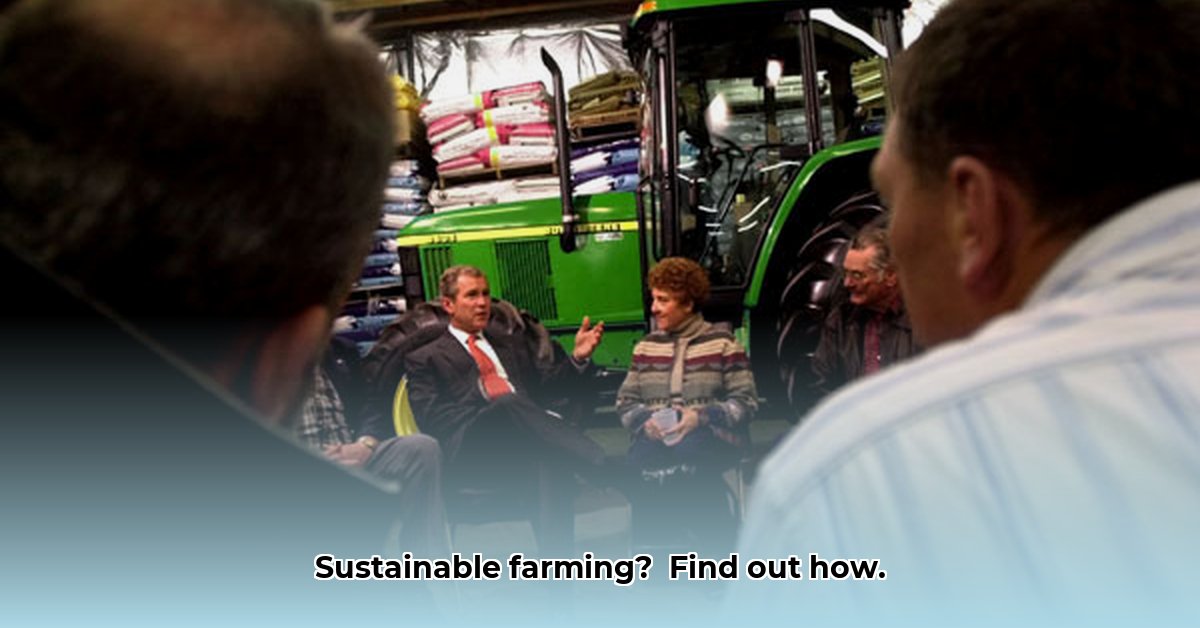
Tractor Supply Company in Billings, Montana: A Sustainability Assessment
Tractor Supply Company (TSC) holds a significant presence in Montana's agricultural landscape, with its Billings store serving as a key hub. This article examines TSC's role in supporting sustainable farming practices in the region, analyzing its contributions and limitations, and offering actionable recommendations for improvement. We will explore TSC's service offerings, assess its environmental impact, and outline steps for stakeholders to enhance sustainability efforts. For more information on TSC's competitors, see this competitor analysis.
Geographic Reach and Services
TSC's Montana network strategically reaches farmers and ranchers across diverse terrains. The Billings store, a central hub, offers a wide range of products and services commonly associated with rural life: animal feed, seeds, tools, equipment, and even convenience services such as propane refills and trailer rentals. While the breadth of services is extensive, a complete picture requires quantifiable data on market share and sales figures to determine its overall impact on the Montana agricultural community. Further research into the specific types of equipment and supplies related to sustainable farming practices offered by TSC is also necessary. This information would paint a clearer picture of the company’s commitment to supporting eco-friendly practices.
TSC's Role in Sustainable Agriculture: A Complex Relationship
TSC's relationship with sustainable agriculture is multifaceted. The company provides essential supplies to farmers, regardless of their specific farming methods. However, a comprehensive assessment of its sustainability contribution requires in-depth analysis of its environmental footprint. Key questions remain unanswered: What are TSC’s energy consumption levels? How effective is its waste management system? Does it prioritize sustainably sourced products? Without concrete data, a definitive assessment of its net environmental impact remains elusive. The prevalence of organic versus conventional farming practices in Montana further complicates the analysis, as a higher proportion of organic farms would imply a greater potential for TSC to positively influence sustainability.
Actionable Recommendations for a More Sustainable Future
Improving TSC's sustainability performance requires a collaborative effort among various stakeholders.
1. For TSC Management:
- Short-Term (0-1 year): Conduct a detailed sales data analysis to pinpoint opportunities for inventory management improvements and identify customer demand for sustainable product offerings.
- Long-Term (3-5 years): Undertake a comprehensive sustainability audit to assess TSC's carbon footprint across its entire supply chain. Based on this data, establish measurable sustainability goals, such as emission reduction targets and the percentage of sustainably sourced products.
2. For Montana Farmers and Ranchers:
- Short-Term (0-1 year): Monitor TSC's pricing and service offerings regularly and provide consistent feedback to influence improvements.
- Long-Term (3-5 years): Explore partnerships with TSC to promote sustainable farming techniques through workshops and bulk purchasing of environmentally friendly products.
3. For Local Communities:
- Short-Term (0-1 year): Evaluate the economic contribution of local TSC stores by assessing job creation and tax revenue generated.
- Long-Term (3-5 years): Engage with TSC to support community-based environmental sustainability projects.
4. For Environmental Groups:
- Short-Term (0-1 year): Evaluate TSC's transparency and sustainability initiatives, fostering open communication to identify areas needing improvement.
- Long-Term (3-5 years): Publicly recognize both TSC's successes and shortcomings to drive continuous improvement.
Data Gaps and Future Research
While this analysis highlights TSC's position within Montana's agricultural landscape, substantial information gaps exist. Definitive conclusions require further research, including market share data, customer demographics, and a precise assessment of TSC's environmental effects. Collaboration between TSC, researchers, and farmers is essential to fully grasp this complex relationship and drive positive change. Only through comprehensive data collection and open dialogue can we evaluate TSC's true impact on the sustainability of Montana's agricultural future. This collaborative effort will be crucial to fostering a more sustainable and economically robust agricultural system in the region. A more comprehensive understanding requires further research into the specific sustainable products offered, the source of those products, and the overall environmental impact of TSC's operations in Montana.
Evaluating TSC's Environmental Sustainability: A Framework
To thoroughly evaluate the environmental sustainability of TSC stores in Montana, a systematic approach is required. This involves scrutinizing their sourcing practices, considering the origins and transportation of products, and reviewing their energy consumption and waste management strategies. Analyzing the carbon footprint of their stores and supply chain is crucial. Further research including audits, surveys, and detailed analysis of TSC’s supply chain is needed to effectively assess their environmental performance. This nuanced approach will provide a comprehensive understanding that reflects the complex role TSC plays in Montana’s agricultural ecosystem.